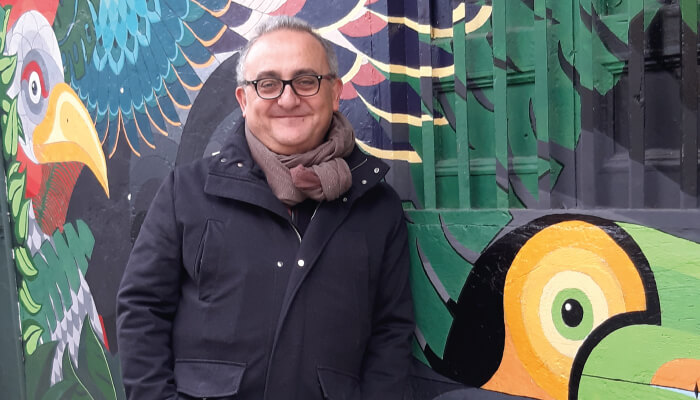You coined the term foodomics – why?
Food scientists have always found themselves in the second lane, so to speak – behind those involved in biotech, pharmacology and clinical studies. When a new instrument is developed, for example, it is always applied first in these areas – and this is also where the most money lies. I simply wanted to show fellow food scientists that we can use the same analytical approaches to solve important challenges in our own field, including metabolomics, genomics, transcriptomics and so on. Many people are interested in this field; in fact, we have a joint research institute with a team from the Chinese Academy of Agricultural Sciences and work with many other high caliber groups.

What keeps you busy?
I am a research professor at the Institute of Food Science Research of the National Research Council of Spain, for whom I also act as head of the Laboratory of Foodomics and Director of the Platform of Metabolomics. I also participate on editorial boards for 13 journals – acting as Editor on two of these – and have a constant flux of PhD students. A good portion of my time is spent seeking funding for the lab group, but this is not a worry at the minute thanks to financial support from some of our larger projects and collaborations. Interestingly, I’m also working as editor-in-chief of a new encyclopedia devoted to comprehensive foodomics – it will have around 200 chapters in total and should be complete around the end of next year!
Which of these roles do you particularly enjoy?
The greatest role for me is as a professor. Our lab always has about 20 PhD students from around the world; the only thing we ask is that they stay a minimum of six months. What’s more, many come with PhD grants, which eliminates the need for us to source funding (a rather difficult process in Spain these days). I love helping the students evolve as scientists, and also watching them experience new things and develop lasting friendships; I feel this very much captures the more human side of our field. Of course, all of this transpires in the international language of science – broken English!
What are you currently working on?
We have been focusing on green strategies to obtain bioactive compounds from food waste, with a primary focus on research in colon cancer. In this context, food waste refers to byproducts of consumption, such as fruit peels or stones, which would often be discarded; our team wants to maximize the uses of such produce. We obtained good results in vitro and in preclinical mouse models of colon cancer, but translating this into the clinic has been tough. So, we decided to look at the use of food waste products to tackle another healthcare issue beside cancer, and we are now getting some great results in Alzheimer’s disease. Of course, Alzheimer’s is a tricky therapy area because the etiology of the disease is still up for debate; it’s unclear whether amyloid beta plaques are a result of the illness or a cause, for example. Fortunately, I enjoy a challenge.
How do you go about identifying clinically useful compounds from food waste?
We try to go step by step, and tend to reach a bottleneck in our ability to screen compounds from food waste for clinical activity in vitro and in vivo because of the need for advanced analytical methods combined with high computer processing power. In the case of Alzheimer’s, such screening efforts might focus on the activity of a given food waste compound against acetyl cholinesterase, for example, but screening could also work by identifying specific compounds with desirable activity (such as anti-inflammatory properties or redox balancing) and the ability to cross the blood-brain barrier. The furthest point we have reached so far with these compounds is clinical assays in diabetic children; we were monitoring how antioxidants from a given food could impact not only diabetes, but also secondary effects relating to diabetes (such as high oxidation levels). Our results were interesting, but failed to show clinical promise; metabolomics studies highlighted interesting pathway differences between treated and untreated diabetic children, but significant differences between these groups (for example, in protein glycosylation levels) were not observed in the clinic.
Are there any developments that would be particularly useful for foodomic studies?
There are many things to be done. For instance, many deficiencies persist in the omics. We are able to generate a huge amount of data, but often we are not able to extract all of the useful biological information from these datasets. It would be helpful if we had a tool able to integrate data from proteomics, metabolomics and transcriptomics – at the moment, we take a much more "homemade" approach to this problem. What’s more, a large number of compounds in the metabolomics datasets also remain unidentified, so developments in existing databases would also be a fantastic step forward. Then, in terms of instrumentation, advances are needed in areas such as the interface between capillary electrophoresis and MS. This is a difficult task, though – it’s certainly not equal to GC-MS or LC-MS just yet.




